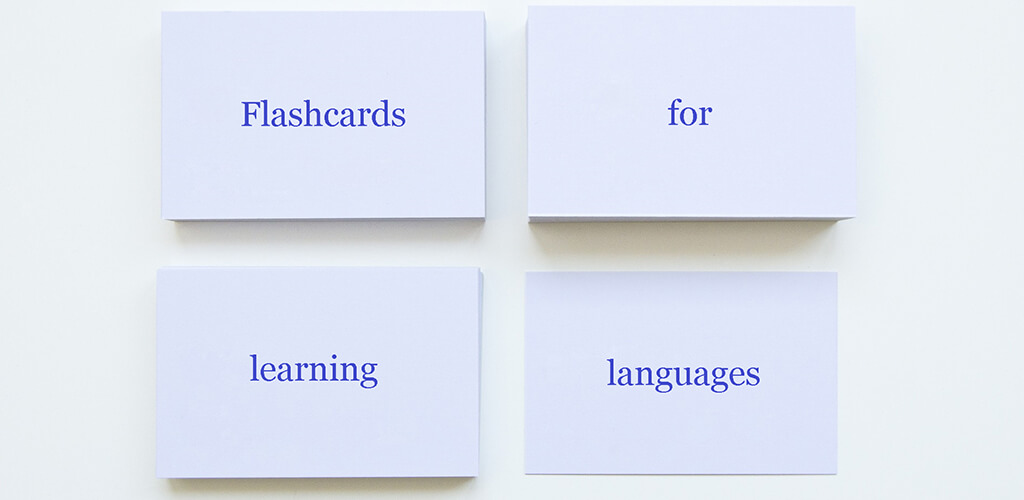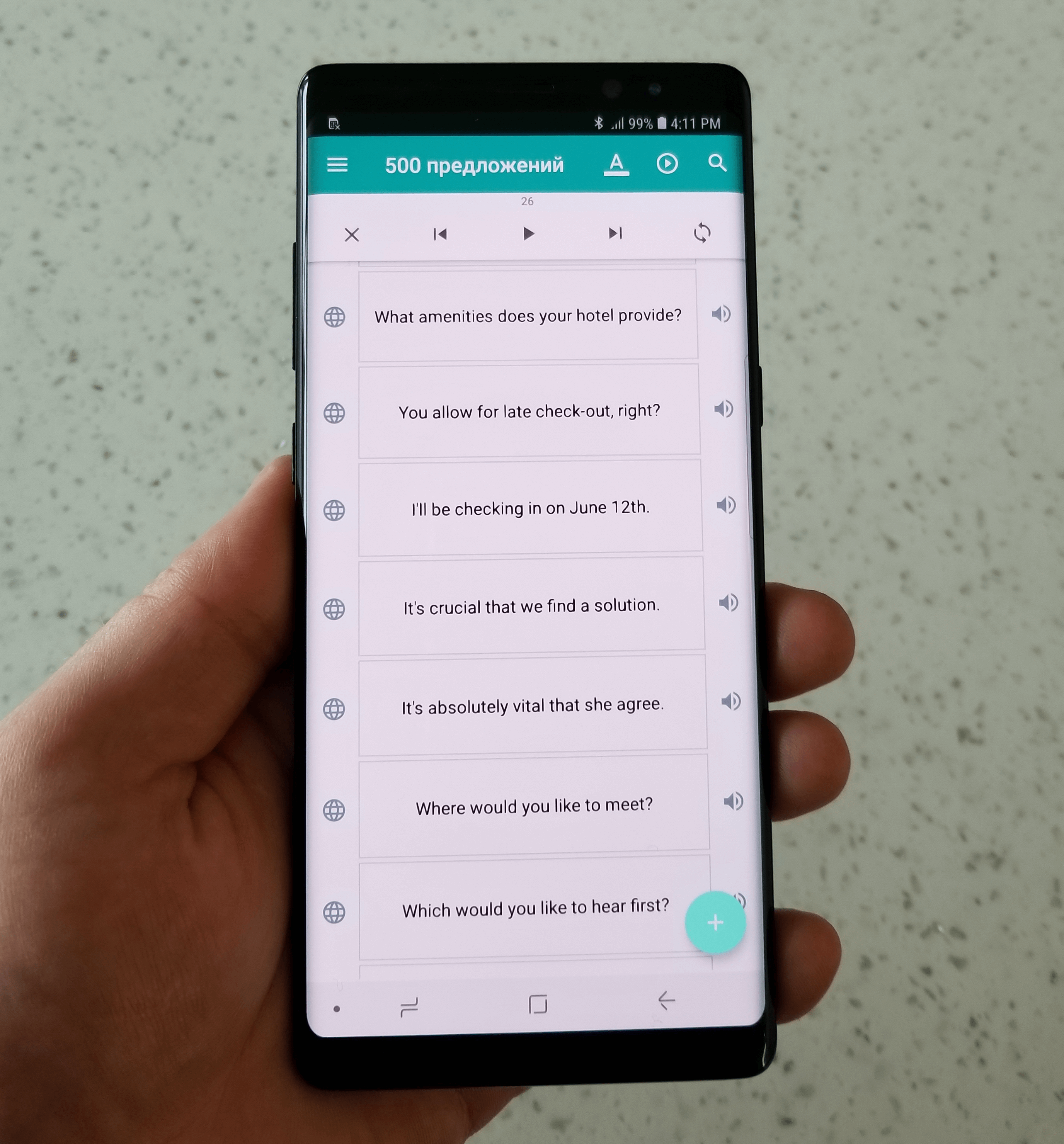Flashcards - language cards for learning a foreign language
Andrei Kuzmin / 29 May
Flashcards for learning a foreign language are the simplest and most common method of self-study. One side holds a difficult word, and the other side has its meaning or translation.
After drawing up a deck of cards, you start to look at the cards, gradually setting aside what you have already learned, until you have learned the whole deck.
After having memorized about 10,000 new words and using them in language practice, I can write a story of my process, which I hope can help you traverse the same path with maximum efficiency, in a shorter time and with fewer errors.
First, I set myself the goal of learning the 500 most used words in English and found the statistics of the most used words, compiled based on research.
Having compiled a list of these words, I began to create paper language cards, to divide them into decks and learn them.
When the goal was achieved, I realized that for a decent knowledge of English, you need to know at least 5,000 different words.
The obvious impossibility of using several thousand paper cards pushed me to develop a convenient mobile application for this purpose.
It was necessary to determine the key functions to achieve the maximum result. Therefore, before starting the development of the application, I compiled a complete list of functions and the required tools:
- Ability to create and store an unlimited number of cards
- Archive for storing and analyzing the volume of the learned material
- Ability to download any data from text documents with the function of automatic creation of cards to make your own educational material
- Automatic voicing of all cards in the desired order, with adjustable repetition rate and functions of using the audio player to listen to the studied material at any time
- Creation of thematic databases on various aspects of life
- Creating language flashcards with images to create associations with visuals
- Operation without the internet and on airplane mode
- Cloud storage for all hard-to-remember words
- Simplicity of use
- Customizable daily exercises for memorizing words
- Notifications of scheduled exercises
- Configurable word sorting order
- Transferring cards to databases
- Ability to learn any foreign languages and several languages simultaneously
Having determined the goals, I began to actively create a new product.
Having little experience developing applications for the Android operating system, I started to work on the first version of LingoCard for my smartphone and in a couple of months the first mobile application with language cards and one database (one deck of cards) was ready. To develop more complex tools, I began to discuss implementation options with professional developers I knew. The guys liked my idea, and as a result enthusiasts began to join the project. After implementing our ideas, we decided not to stop and developed several more unique tools for two operating systems: Android and iOS. We've hosted our app on Google Play and the Apple Store for free.

For several months, tens of thousands of people around the world began to use our apps without any fees, we received many thank-you-letters, indications-of-mistakes-letters and suggestions on how to improve the product, for which we are grateful. As a result, we have a large number of tasks and new ideas.
As you immerse in the language environment, there comes the understanding of the need for the ability to quickly formulate sentences. It is the understanding of sentences and basic phrases that makes your speech acceptable for conversation and quick translation. Therefore, it was decided to compile cards with sentences, phrases and idioms. Now, in our applications you can find hundreds of thousands of language cards with a bunch of words and various sentences.
All language cards in our applications don't have any limit for adding text, so it is possible to create flashcards with your favorite song lyrics or paragraphs from your favorite books. After adding a lot of text, you can scroll up or down and listen with the speech synthesizer.
Flashcards are available for training in two modes:
- The list of cards mode, where you can see all the cards at once and scroll the database up/down. Each card can be flipped directly from the list by tapping the flip button.
- Open card mode. Here you can open the card in full view with a large text content and swipe all the cards to the left/right. In this mode, it is also possible to edit cards, send them to an active and studied database. It is also possible to attach pictures and photos to the flashcard to create associative "visual images". Each card is rolled over to the other side by simply tapping anywhere in the text field.
In the application menu, you can find many settings for different training modes.
Working on the problem of lack of time for studying, we decided to create a unique audio player that will voice any text and any created cards in any order, alternating between foreign words and their translation. As a result, a foreign language can be studied similarly to listening to music anywhere and anytime. Now this tool is implemented with the possibility to listen to about 40-50 foreign languages, depending on the device and platform used. I believe that after a while our player will work with all the known languages of the planet.
It may also be important to memorize words, for example, in alphabetical order, in reverse alphabetical order, randomly, in topics, etc.
You can study any combination of 67 foreign languages with our tools. All your flashcards are stored on a cloud server, so you can change devices, you just need to remember your email and password.
In the near future, we plan to develop a tool for searching for native speakers and a video conference function, with which you can create new language cards throughout the conversation or lesson.
In addition, with the help of our flashcards you can practice the correct pronunciation of words or sentences. To do this, we are implementing and developing tools with speech recognition that will listen to your pronunciation and show your mistakes.
Use of Leitner's system.
The Leitner system is a widely used method of efficiently using flashcards that was proposed by the German science journalist Sebastian Leitner in the 1970s.
It is a simple implementation of the principle of spaced repetition, where cards are reviewed at increasing intervals.
In this method flashcards are sorted into groups according to how well the learner knows each one in the Leitner's learning box. The learners try to recall the solution written on a flashcard. If they succeed, they send the card to the next group. If they fail, they send it back to the first group. Each succeeding group has a longer period of time before the learner is required to revisit the cards. This method can be used both for learning the words of a foreign language, and for memorizing other information.
You will be able to use the Leitner system with our application. Flashcards can be moved in several groups. For example, you load the training material into an application or simply select a ready-made dictionary, then as you move through the cards, you can move them to the "studied" database, leave them in the deck if you can't immediately remember them, or transfer the most difficult words to the active database. Then you study first the active database, then selected and from time to time, revise the learned material in the studied database.
Our brain does not understand why it needs to remember a large number of new words and constantly tries to get rid of unnecessary information. To overcome this problem, we need to literally force the brain to do it. Just imagine that to remember a thousand new words, you need to create several hundred thousand or even millions of new neural connections in your head! As a result, we certainly become smarter.
To achieve these goals, we are developing our unique software that can be compared to a loom for creating new neural connections in the brain - you just have to pick the right material and put in the effort to achieve the best result.